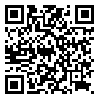BibTeX | RIS | EndNote | Medlars | ProCite | Reference Manager | RefWorks
Send citation to:
URL: http://jdisabilstud.org/article-1-2898-en.html
2- Associate Professor, Department of Educational Psychology, Faculty of Psychology and Educational Sciences, Allameh Tabataba'i University, Tehran, Iran
3- Assistant Professor, Department of Psychology, Tehran Branch, Payame Noor University, Tehran, Iran
Abstract
Background & Objectives: Efforts to reduce students' learning disabilities have always been the focus of psychologists. In this regard, one of the motivation theories is the impulsivity theory, which tries to maintain the level of stimulation and activity at an optimal level. Many factors affect impulsivity, including irrational beliefs. These beliefs are thoughts and ideas in which obligation, compulsion, absolutism, and duty are observed, contributing to behavioral and emotional disorders. Another variable is emotional maturity, the study of which is critical concerning impulsivity and irrational beliefs. Emotional maturity means the ability to manage disturbing emotions. Irrational beliefs play a decisive role in the academic performance of students. Irrational beliefs contribute to students' ability to manage stress resulting from adverse life events, anxiety, stress, and adaptation. This study aims to prepare a structural equation modeling for the irrational beliefs and impulsivity readiness mediated by emotional maturity in high school students.
Methods: The present study method was an analytical–correlational based on structural equation modeling. The statistical population comprised all high school students in Kuhdasht City, Iran, in the academic year 2020–2021. Out of 3684 students, 400 were selected by multi–stage cluster sampling. In this study, considering 18 obvious variables, the probability of subjects dropping out, and increasing the accuracy and generalizability of the results, 400 samples were selected. The inclusion criteria comprised being a high school student, showing interest in cooperating in research, and lacking any physical or mental illness (based on the information in the student's academic records). The exclusion criteria comprised a lack of research cooperation and physical and mental illness. To collect the required data, the following questionnaires were used: the Irrational Beliefs Questionnaire (Jones, 1968), the Impulsivity Questionnaire (Barrat et al., 1997), and the Emotional Maturity Questionnaire (Singh & Bhargava, 1990). For data analysis, Descriptive statistics (mean and standard deviation) and inferential statistics (Pearson correlation coefficient and structural equation modeling) were performed using SPSS 23 and AMOS 22 software. All tests were conducted at a significance level of 0.05.
Results: The results showed a significant inverse correlation between emotional maturity variables and irrational beliefs variables (p<0.001) and a direct and significant correlation between emotional maturity variables and impulsivity readiness variables (p<0.001). Also, a significant inverse correlation was observed between the variables of impulsivity readiness and irrational beliefs (p<0.001). Furthermore, the direct effects of irrational beliefs on emotional maturity (β=–0.87, p<0.001), emotional maturity on impulsivity readiness (β=0.19, p<0.001), and irrational beliefs on impulsivity readiness (β=–0.22, p<0.001) were significant. On the other hand, the indirect effect of irrational beliefs on impulsivity readiness mediated by emotional maturity was significant (β=–0.16, p<0.001). Also, the total impact of irrational beliefs on impulsivity readiness was significant (β=–0.38, p<0.001). Good fit indices also indicated a good fit of the model (χ2/df=2.63, AGFI=0.917, GFI=0.894, CFI=0.916, RMSEA=0.064).
Conclusion: Based on the study's findings, irrational beliefs affect students' impulsivity readiness by mediating emotional maturity.
| Rights and permissions | |
 |
This work is licensed under a Creative Commons Attribution-NonCommercial 4.0 International License. |



